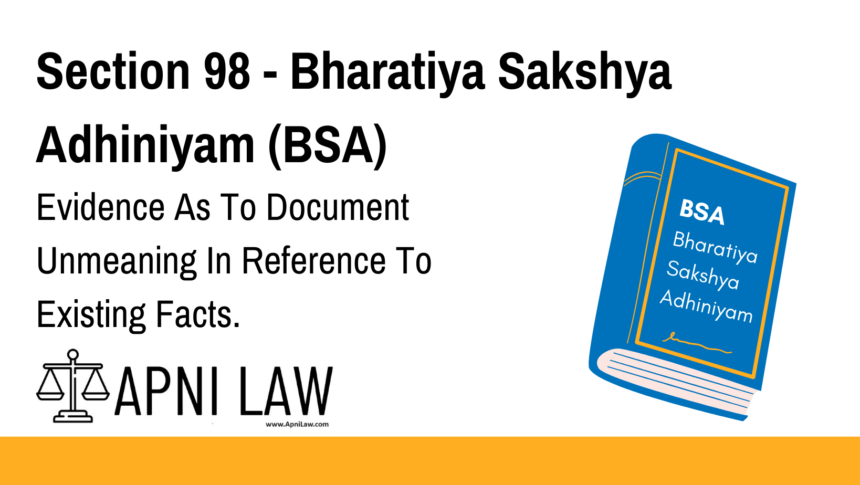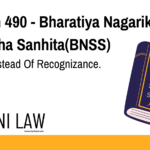Code: Section 98 – Bharatiya Sakshya Adhiniyam, 2023
When language used in a document is plain in itself, but is unmeaning in reference
to existing facts, evidence may be given to show that it was used in a peculiar sense.
Illustration.
A sells to B, by deed, “my house in Kolkata”. A had no house in Kolkata, but it
appears that he had a house at Howrah, of which B had been in possession since the
execution of the deed. These facts may be proved to show that the deed related to the
house at Howrah.
Explanation of Section 98 BSA
Section 98 of the Bharatiya Sakshya Adhiniyam deals with situations where a document uses language that is clear in form but does not correspond to the existing facts. In such circumstances, evidence may be introduced to demonstrate that the words used were intended to convey a different meaning based on the context.
This section ensures that a contract or legal document is not rendered void simply because its literal wording appears nonsensical in light of the factual circumstances.
Objective:
To avoid miscarriage of justice by interpreting documents in line with the parties’ actual intent when literal interpretation causes confusion.
Illustration
A deed states that “A sells his house in Kolkata” to B. In reality, A does not own any property in Kolkata. However, he owns a house in Howrah where B has been residing since the execution of the deed. These facts may be used to show that the document actually refers to the house in Howrah.
Common Questions and Answers on Section 98 BSA
Q1. When does Section 98 apply?
Section 98 applies when the language in a document is plain on the surface but meaningless in the context of the existing facts. Evidence may be allowed to show what was actually intended.
Q2. How does this differ from Section 97?
While Section 97 prohibits evidence when the document aligns with existing facts, Section 98 permits evidence when the wording, though clear, does not apply to any real-world situation.
Q3. What kind of evidence is admissible under this section?
Any relevant evidence (oral or documentary) that helps clarify the peculiar meaning intended by the parties may be admitted.
Q4. Does this section allow changing the meaning of a document?
Not arbitrarily. It allows explanation only when the document’s plain language becomes unmeaningful in light of the facts.
Conclusion
Section 98 of the Bharatiya Sakshya Adhiniyam promotes justice by allowing courts to interpret documents sensibly in cases where literal interpretation creates confusion or misalignment with reality. It supports the true intention of the parties over rigid formalism.
If you’d like, I can prepare HTML-ready content or continue with the next section. Let me know how you’d like to proceed.













